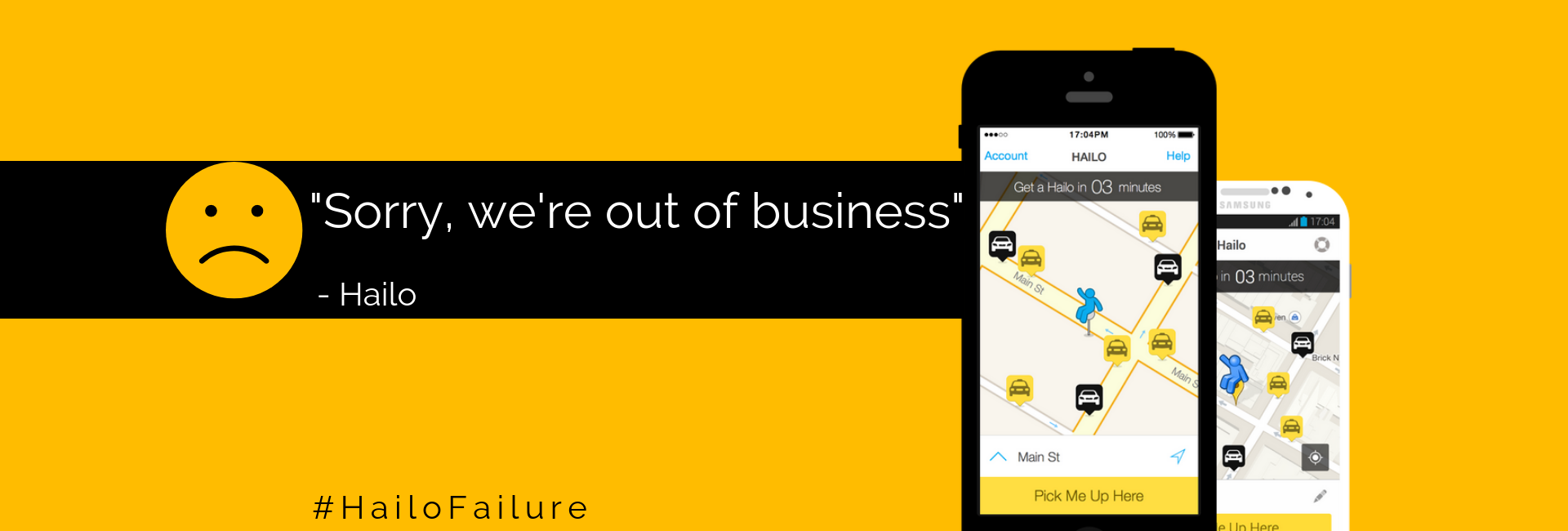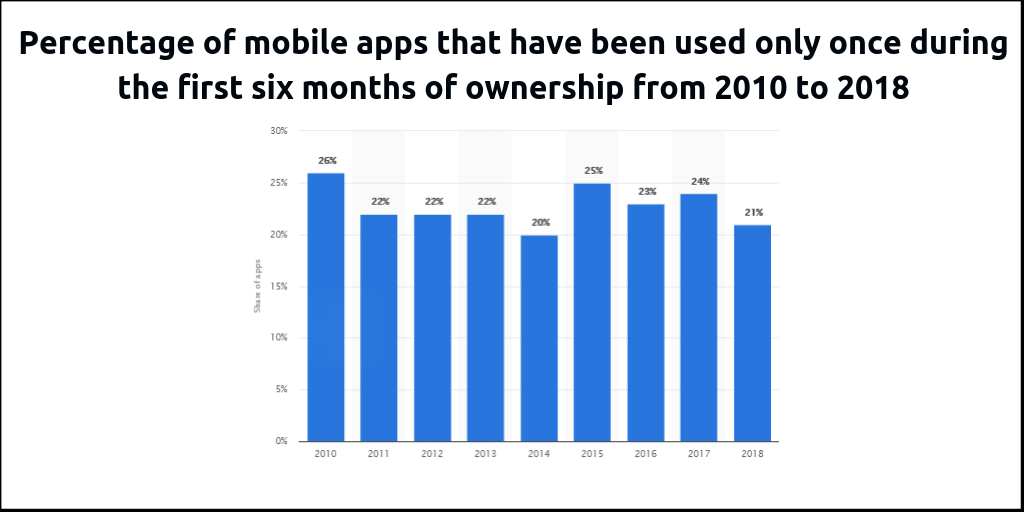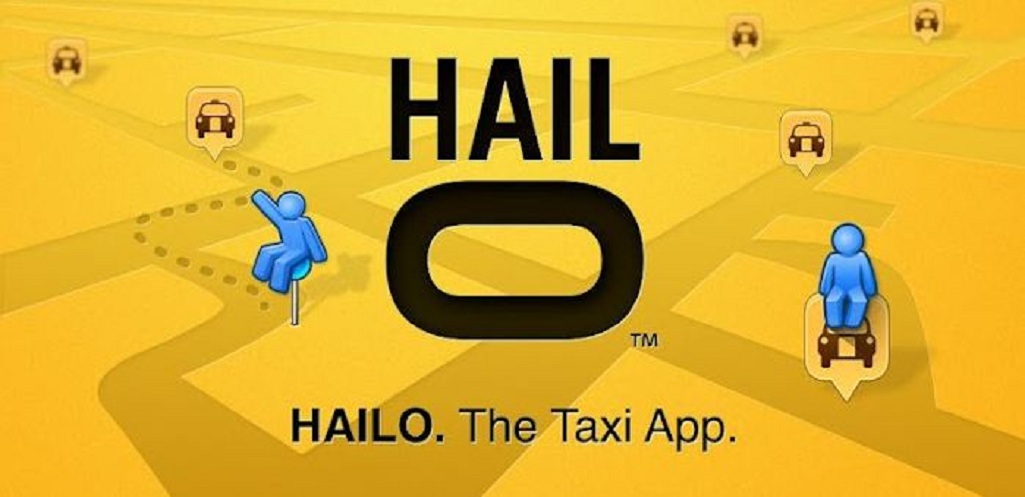Don't miss the chance to work with top 1% of developers.
Sign Up Now and Get FREE CTO-level Consultation.
Confused about your business model?
Request a FREE Business Plan.
Why Hailo – an On Demand Taxi App with $100 Million in Funding Failed in the US
Table of contents

If you’re planning on developing a mobile app, there are chances of you getting failed.
According to a research by Statista, 21 percent of apps downloaded by mobile app users worldwide were only accessed once during the first six months of ownership.

According to Wall Street Journal, just 60% of new businesses survive to age 3, while just 1 of every 10 makes it for 10 years or more. So, an application failure is without a doubt not surprising. Maybe not, for many. But, for the app developer who invested his hard-earned money in the development and marketing process of the app, it is heartbreaking.
When an application flops after putting considerable efforts, time and money into its development, everybody is responsible. And possibilities are great that the entire project will after that be canned. Mobile application failure goes a long way beyond a bug or error that can be solved. There can be numerous issues that can cause an application to fail. Finding them out won’t really make your application insusceptible to failure, but it will enable you to proceed cleverly and avoid signs that could make things take a dreadful turn.
To figure out such things, we decide to study the failure story an on-demand taxi app – Hailo.
What was Hailo – an on Demand Taxi App Like Uber

Hailo was a British technology platform that matched passengers and taxi drivers through its mobile phone application. Their on demand taxi booking mobile app used to act, look and feel a lot like Uber. Established in London in 2011, the Hailo taxi service was accessible in 16 cities in 2013. The main goal of Hailo before entering the market was to make hailing a taxi as easy as sending a text – with just a few taps.
Earlier its services were restricted to London where it did incredibly well. It empowered more than 3 million rides for travelers from more than 30,000 enlisted cab drivers. When its branch office opened in New York, the organization already had 2.5 million users.
In spite of gaining such noteworthy traction and even having $100 million in funding, it was compelled to leave the U.S. market soon because of a few reasons.
The Reasons behind the Failure of Hailo
Hailo worked well in London as an on demand taxi service. But in NY, it failed. The company decided to take the yellow cab market of New York and get existing drivers to utilize their application for connecting to potential travelers. The idea was to use the existing base in order to get the advantages. But, it didn’t worked. Only a few out of New York’s 40,000 drivers signed up for Hailo. Why? Here are the reasons:
They Paid No Attention to Market Research
Hailo wasn’t right to assume that the yellow taxi drivers in New York were equivalent to their British counterparts. The facts they didn’t consider before entering the market are:
- London is known for being one of the world’s most confusing cities, so most drivers use smartphones (which are the major requirement for an application to work).
- Drivers in NY often don’t require cell phones because of the simple route of the city’s layout.
All that happened because of poor or no market research.
They Made Faulty Assumptions
They made a wrong assumption that NY cab drivers required help in finding travelers and proper fares; however, this wasn’t the situation. The yellow taxis in NYC have been ticking along fine all alone, and Hailo simply wasn’t that essential.
They Paid No Attention to Their Mobile App
Hailo’s mobile application wasn’t good for the specific audience of NY as they trusted it would be. Hailo additionally confronted technical issues in New York. Since the city at that time used to work with payment processors using outdated technology, Hailo later on realized that it is hard to integrate its services with them.
They Paid No Attention to the Competitors
At the point when Hailo was prepared to release in New York, a bundle of other similar services were additionally lined up and Uber was its greatest rival. The organization’s unique plan was to offer amazing prices while concentrating on the yellow cab market, which left the higher-end market to Uber.
It ended up losing the competition when Uber turned out with stunningly better prices (particularly for its UberX service).
They Were Unable to Compete
The value proposition of Hailo was specifically challenged by market pioneer Uber when it revealed its less expensive UberX service. Their one strength (London) weakened after Hailo started charging a base fair of £10 amid peak hours.
Key Takeaways from Hailo’s Failure
1. Market Research Is Crucial
Your failure is destined if you proceed by not researching what is possible or needed in the market. Before entering the market you should make sure that the market position can support your business goals. Know your users, their preferences, and how they will probably interact with your app or product.
2. Testing the Market Is More Crucial
Market research is fine, but the genuine test is how the target audience will react to your product. Hailo would have spared itself by not making suspicions that drivers in NY require their mobile application. Before launching an app, ensure that the users need it.
3. Technical Issues Can Spoil Your Business
Anything that causes errors, slow performance, or crashes an application can prompt issues you can’t manage. Understand what technologies your application should incorporate with, and work accordingly. Also, you should ensure that your application can be utilized wherever you are intending to launch it.
4. Poor Planning Can Lead to No Adoption
The idea behind Hailo wasn’t actually unneeded; it simply was not packaged in a way that appeared well and good for adoption and usage. The lack of planning behind Hailo lead to no adoption – neither by taxi drivers nor by those requiring a taxi.
5. Be Prepared For Everything
Changing ideas to mobile apps is fine. But you must be ready for whatever comes next. To encourage continued usage of your application, changes or tweaks in what you offer is crucial and that Hailo never did. You never know, when the competitors will enter with an intention to kick you out of the market.
Conclusion
Hailo – an on Demand Taxi App – is a prime example of why user and market research is so critical in mobile application development. From its failure, we can figure out how necessary it is to uncover presumptions and generate proofs amid the research procedure. The organization could have avoided some of their slip-ups if they had more research to get a better understanding of the market they were entering. Now, Hailo is merged with My Taxi but, it is still a sad end for the British taxi company.
Rate this article!
(9 ratings, average: 4.22 out of 5)
Join 60,000+ Subscribers
Get the weekly updates on the newest brand stories, business models and technology right in your inbox.

Humane yet subtle, Naiya is a girl full of ideas about almost everything. After earning a bachelor’s degree in computer science and engineering, she decided to merge her technical knowledge with her passion for writing – to accomplish something interesting with the fusion. Her write-ups are usually based on technology, mobile apps, and mobile development platforms to help people utilize the mobile world in an efficient way. Besides writing, you can find her making dance videos on Bollywood songs in a corner.

App Monetization Strategies: How to Make Money From an App?
Your app can draw revenue in many ways. All you need to figure out is suitable strategies that best fit your content, your audience, and your needs. This eGuide will put light on the same.
Download Now!Have a Digital Solution ? Don’t Let It Fail.
Make your solutions future ready by using the right tech stack.

















